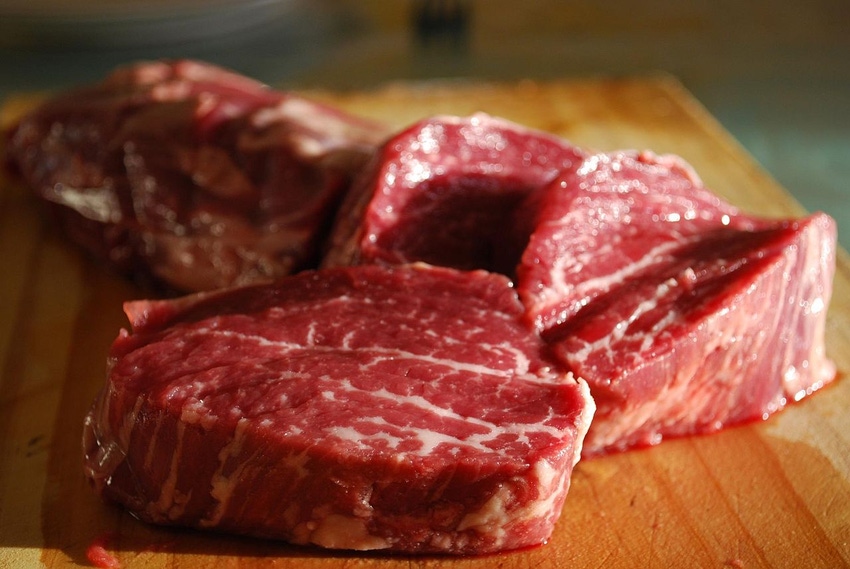Project focuses on building new index for more accurate data.

It is critical to understand and monitor beef demand as it directly influences overall beef industry prosperity. When beef demand strengthens, beef and cattle prices for the entire industry are higher than they otherwise would be, according to Kansas State University economist Glynn Tonsor. This highlights the clear economic value in accurately measuring beef demand, he said.
One way to measure demand is through construction of an index that provides an easy-to-understand, single-measure indicator of beef demand over time.
While existing demand indices for monitoring demand strength are useful, they all have a number of limitations. As such, a beef checkoff-funded study by Tonsor and Ted Schroeder, also with Kansas State University, recently examined the feasibility of developing new foodservice and grocery store beef demand indices.
“Throughout 2016, we looked at various ways to assess beef demand strength. The motivation for that was, currently, there's a very curt and aggregated way to monitor beef demand, but there are a lot of limitations with our current approach,” Tonsor said, adding that "the purpose of this project was to build new indices, explore if they make sense and then draw a recommendation for the industry of which ones to retain going forward."
He explained that indices that are updated more frequently and may be dissected by product or market region can be especially informative about where demand is changing most. “Armed with such information, the beef industry could better adjust, target and monitor product marketing strategies,” he said.
The reason the average producer should care is because consumer demand dictates how many dollars are available for the total industry, Tonsor noted, so "if consumer demand is going up, then we know wholesale beef values are higher, we know fed cattle prices are higher (and), therefore, we know all feeder classes are going to be higher. When beef demand is lower, the reverse occurs.”
As beef demand changes over time, insights from regularly updated demand indices would provide the entire industry with a barometer of demand strength. Operators throughout the nation's retail sector could use this information to benchmark their own situation within the broader beef demand position.
If demand is improving in a retailer's region but not in their operation, for instance, that information might lead to more timely solutions to marketing challenges. Conversely, if a retailer's operation is experiencing stronger beef demand than the broader region, that could provide valuable lessons about the elements of “winning strategies.”
Tonsor also emphasized the importance of understanding the difference between supply and demand.
“Supply is simply what's available: The size of the herd gives us the number of animals in the system; the pounds put on gives us the amount of beef that's available. So, the amount we produce is really what we consume," he explained. "Per capita consumption is literally just the amount of beef available divided by the U.S. population.”
Demand, he said, accounts for the fact that people pay a different price over time, and “they value those pounds differently over time." Tonsor added that the separation between supply and demand is that "demand brings the price — the value component — for the pounds' end of the story. Supply is simply a volume measure.”
Ultimately, gaining a deeper understanding of any situation requires ongoing effort and appreciation for details that previously may have been ignored. Beef demand is no different, Tonsor added. “Previously available insights regarding beef demand were limited to summarizing the situation in a highly aggregated, national manner. Going forward, refined insights specific to geographic regions or product type could be used to refine understanding of current beef demand,” he said.
The researchers gathered data from IRI, which allowed them to build a host of demand indices specific to the grocery store channel and that they ultimately concluded are pretty viable. “So, we suggest the industry support indices that are specific to the grocery store arena both for aggregate beef for the country as well as aggregate beef by region — and then also broken out by ground beef and steak and a couple other distinctions,” they said.
It is the researchers' hope that this improved understanding will assist all beef industry stakeholders, including retailers that act as the face of the industry for consumers.
“I think program managers within the industry can use this information to refine their efforts,” Tonsor said. “Likewise, retailers could assess how strong beef demand is in their region or for a particular beef cut type and, in some sense, crosscheck that with what they see in their stores or company," Tonsor said. "They can use it as a bit of a benchmark for, 'This is what my numbers say. How do they compare to others?' Or, 'Others are seeing ground beef demand grow; why am I not?'”
Those kinds of things, he said, could be used by individual entities to crosscheck the aggregate story.
Last, Tonsor said there is opportunity to be more strategic by focusing resources where beef demand is being most affected. Reallocating dollars would mean more “bang for the buck,” he added.
About the Author(s)
You May Also Like

.png?width=300&auto=webp&quality=80&disable=upscale)

